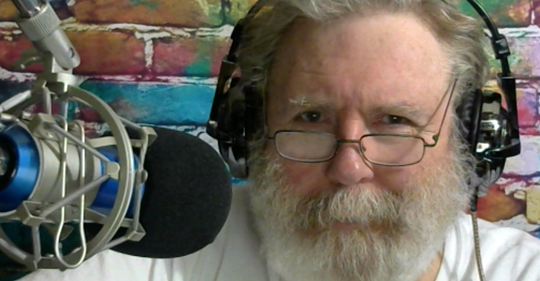While this whole Search Engine Optimizations (SEO) thing can get pretty complicated, and FAST, it is not rocket science. Here at Ultimate Virtual Solutions, and previously at our then sister businesses, Hutchinson SEO and WizardsPlace, we have done a lot of work with small businesses, helping them with their search optimization and content marketing needs.
As a result we have learned a few things that work. And we know the kinds of things you can readily apply yourself. Let me share the best 13 on-page SEO tips I know — actionable tips you can use right now — with you in this post.
In short, it means thirteen instead of the normal twelve. There are, in fact, just 13 items the online solopreneur needs to concern themselves with to get reasonably good search indexing and search engine return pages (SERPs) results for the website and blog content they write.

Basic SEO is not — does not have to be – techie at all. In fact, and as these are the best 13 on-page SEO tips, it will be clear, SEO can be straight forward and easy for anyone to implement. In fact, I normally cover this Baker’s Dozen on-page SEO tips in a live (or live-streaming) presentation but let me outline them here for you today in this post.
Focus Keyword – while every major word and phrase in your web content (page or post) will be indexed, you should generally pre-select a single focus keyword (or phrase) relating to the topic you will write about and then use it according to the remaining 12 points below. Google the title of this article and see where it shows up in the result..
Page/Post Title – your title should introduce your topic, drawing human interest to your content, and also contain your focus keyword for search engines to find. Some say it should be near, or at, the beginning of the title. This may help, and it certainly doesn’t hurt. Always remember, however, search optimization is important but your human visitors come first.
First Paragraph – all of the writing factors like opening statements and not burying the lead, and such, apply to your page or post content. It is also considered a good idea to include your keyword in your first paragraph as well. It doesn’t have to be at the beginning, or at any other particular place, just in there. It is a good idea, though, to have your first paragraph actually be first, before any sub-headings, images, or lists. You might say that’s why they call it a first paragraph.
Sub-Headings – if your content breaks naturally into sections, the use of sub-headings can help with the read and with the SEO. These are typically marked with the HTML heading tags like H1 or H2, etc. There is a correct form, or hierarchy, for this but not all post editors (this one for example) support that correct structure. It is considered helpful to include your focus keyword in at least one sub-heading if your page or post feels right to use them.
Paragraphs – use all your good writing skills to create that inviting opening paragraph, some paragraphs in the body, and a final paragraph that wraps up the post and contains a call to action. It is good for your readers when text is correctly written and broken into easily readable chunks. Run-on text is nobody’s friend. It is also surprisingly good for SEO as well. What you write about is important. How you structure it is too. A single blank line between paragraphs is also good.
Lists – using a bullets or numbers to define a list is a good way to deliver content. It breaks the post into bite sized morsels and it imparts a sense that you are writing with authority. You do not have to use a list for nearly your whole post as I am doing here. You can, but even three to five short bullet points is good. Once again it is good for people and it is good for SEO.
Number Of Words – one of the top questions I am asked about blogging is how much (the other one is how often) and there is a lot of discussion on this point. The right answer, I think, is to write as much as it takes to tell the story. Then stop. Sometimes you only need a few words. Fifty. One Hundred. And that is good enough. Sometimes it takes more (like now) to cover a topic completely. So you write more. Apparently Google likes to see about 300 words minimum in a post. But people will not read it all if it is too long. Very big posts can be broken into part 1, part 2, etc.
Keyword Density – this is the tough one. People really sweat over this point. But you should not worry about it. While something in the range of 0.5 to 2.5 percent is probably the techie number, and you want your focus keyword to show up about every 100 to 200 words or so, remember, my focus keyword was On-Page SEO Tips and, to this point, I have not used it quite enough to meet those numbers. (Did you see how I just slipped my keyword in there?)
But the exact number is not as critical as some SEO gurus would have you believe. This post is all about WizardsPlace Baker’s Dozen SEO tips and there are lots of keywords here that will get good indexing for this post. I chose the one I did (I almost said it another time) because I wanted something that would stand out in the post for you to see what I was doing. In this post it is more to show you (the reader) than to be there exactly right for the search engine. Your posts will often be like that too.
Easy Reading – for decades newspaper reporters were told to write for a sixth grade reader. That was considered the average reading level of the population at large. It will vary, of course, depending on whether you write easy-read popular novels or deep dish technical papers. And when it comes to blogging you need to know your target audience. None-the-less you want to keep it as easy going as possible. A good test is the Flesch Reading Ease Score and you want something in the 65+ range. You can achieve this by having more single syllable words than not. It also helps to write standard contractions as full words — you know, do not, have not, is not, will not, etc.
Image(s) – images are a great way to convey or support your message. You know the old adage, “A picture speaks a thousand words!” — well, it is true. And pictures server to break the monotony of long patches of text. They should be used carefully, though. Too many pictures, or unrelated pictures, can distract from your message. Many search engines will index images, though, so having at least one is a good idea.
Alternate Text Attribute – the HTML that inserts images into posts may contain something called the alternate text attribute or, simply, the alt attribute. Some call it the alt tag but it is not really a tag. It is an attribute contained within the HTML tag. Some editors allow you to add this to your images. Some do not. If you can, you should and it should contain your focus keyword. It should also contain text that describes the image too, because that is what it is there for. Software reading your post to the visually impaired uses the alt text to voice the image.
Image Caption – sometimes you can place a caption along with your image. It provides a brief explanation and can put your image in context for a reader who might just not get it. You can slip your focus keyword into the caption as well — and that will never hurt your SEO.
Link(s) – having one or more links in your content can be helpful for readers and for SEO. I have heard SEO gurus talk about “keeping the Google juice” which may have once been the way to do it — I am not altogether sure it ever really was — but these days you want links. You want internal links to other relevant posts, if you have them, and you want external links (yes you do!) to other relevant sites. Use relevant text to create the link but DO NOT put your keyword in it.
So, there you have it. Thirteen points (a baker’s dozen on-page SEO tips).
And that is the crux of it. Thirteen points on what you can do with on-page search optimization that will be good for SEO and keep your writing readable for your readers. Sure, there are other things. SEO is a complex subject in its entirety. But this Baker’s Dozen On-Page SEO Tips is not hard and if you will do all (or most) of them for each of your posts you will find your work indexing well in the SERPs. And that’s another point. You don’t have to use all of them. Typically just about any nine of them will get you green lighted by Yoast SEO plugin or SEO by Rank Math plugin. Try it. You can always prove me wrong.

